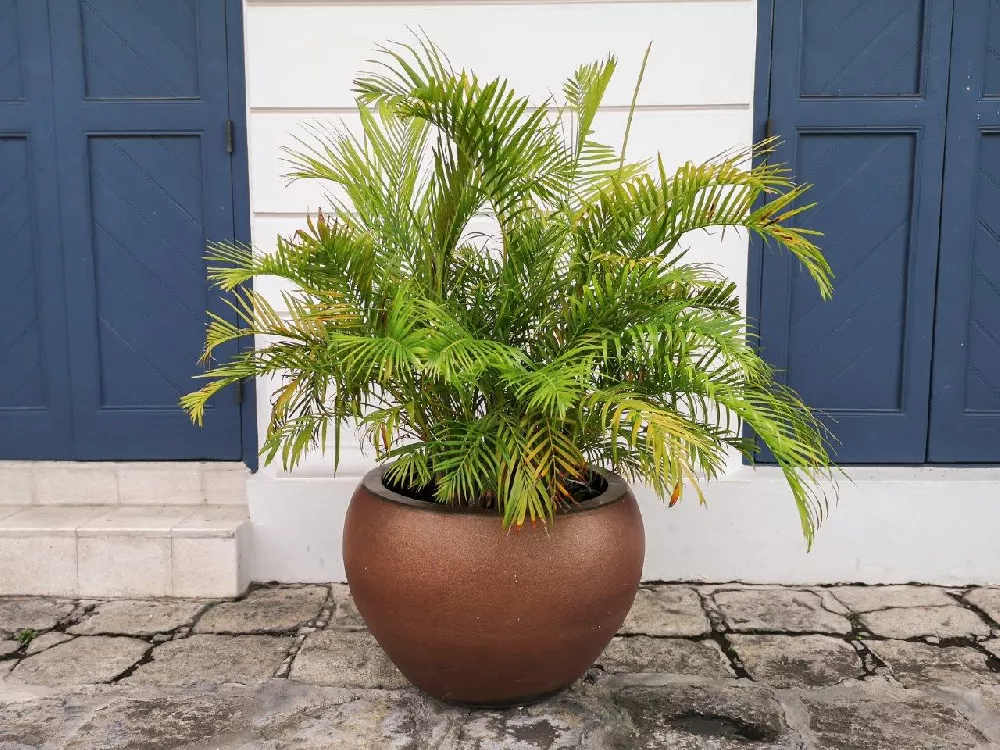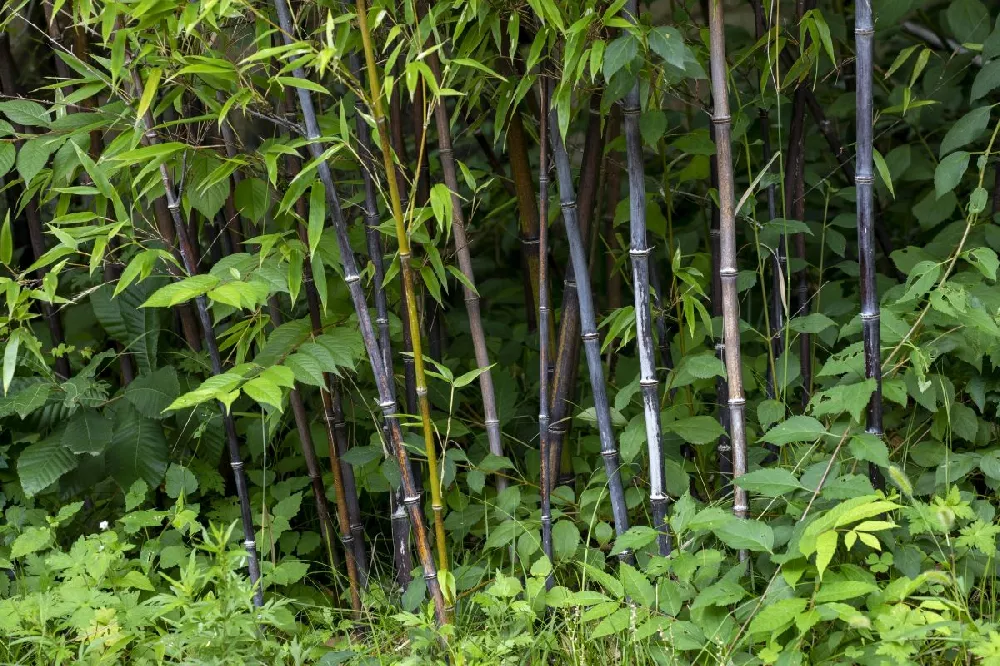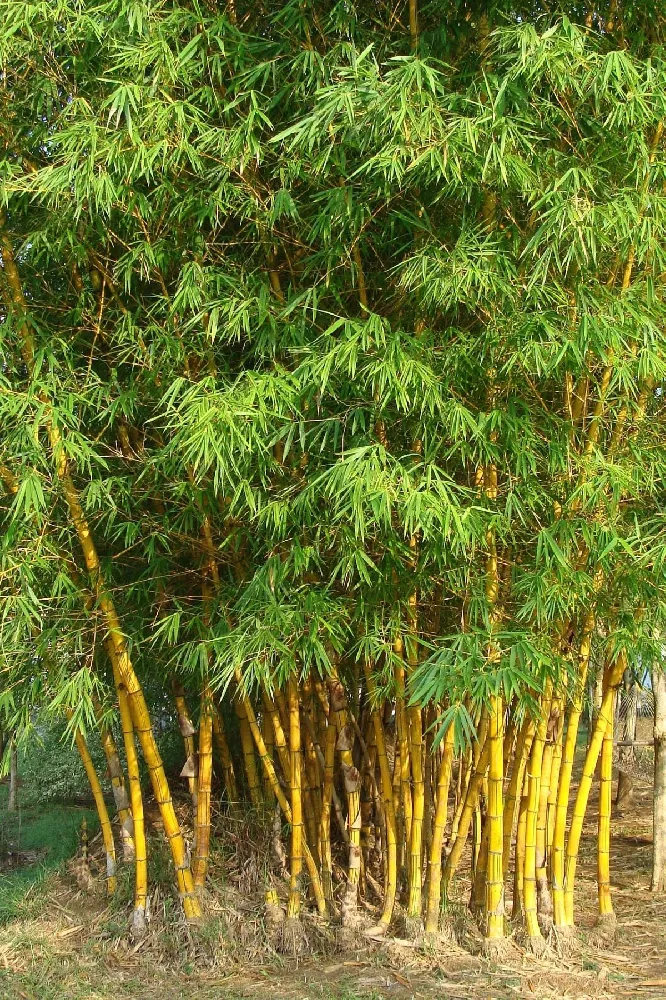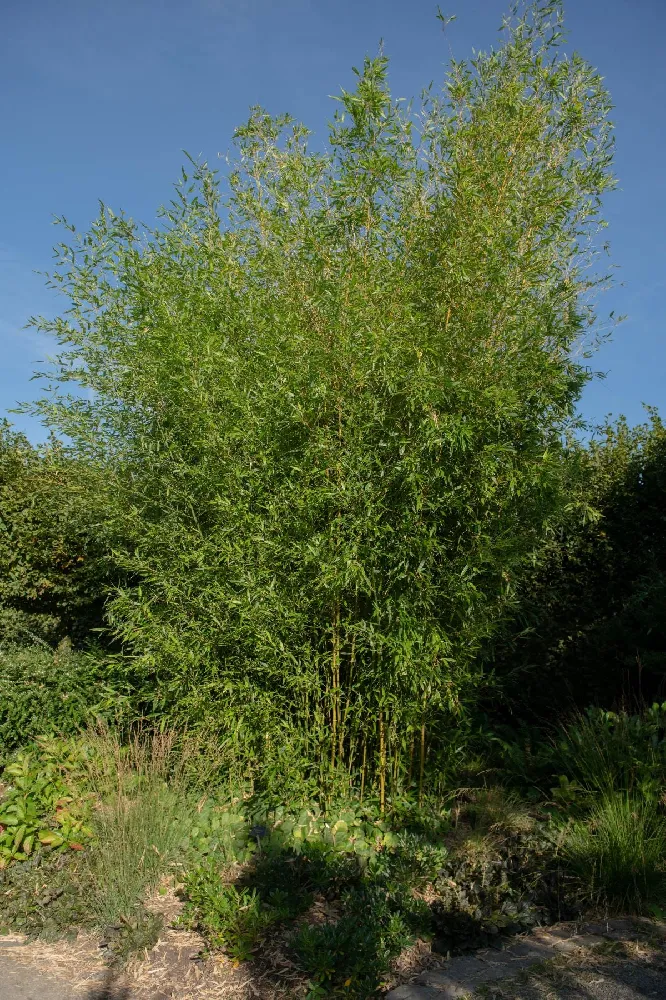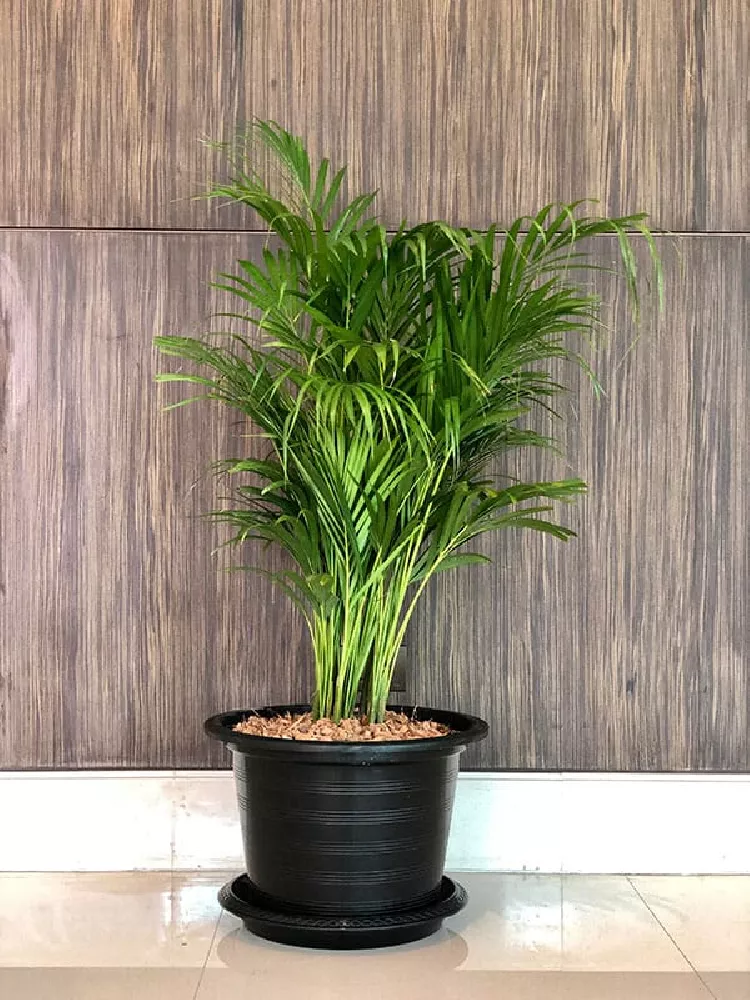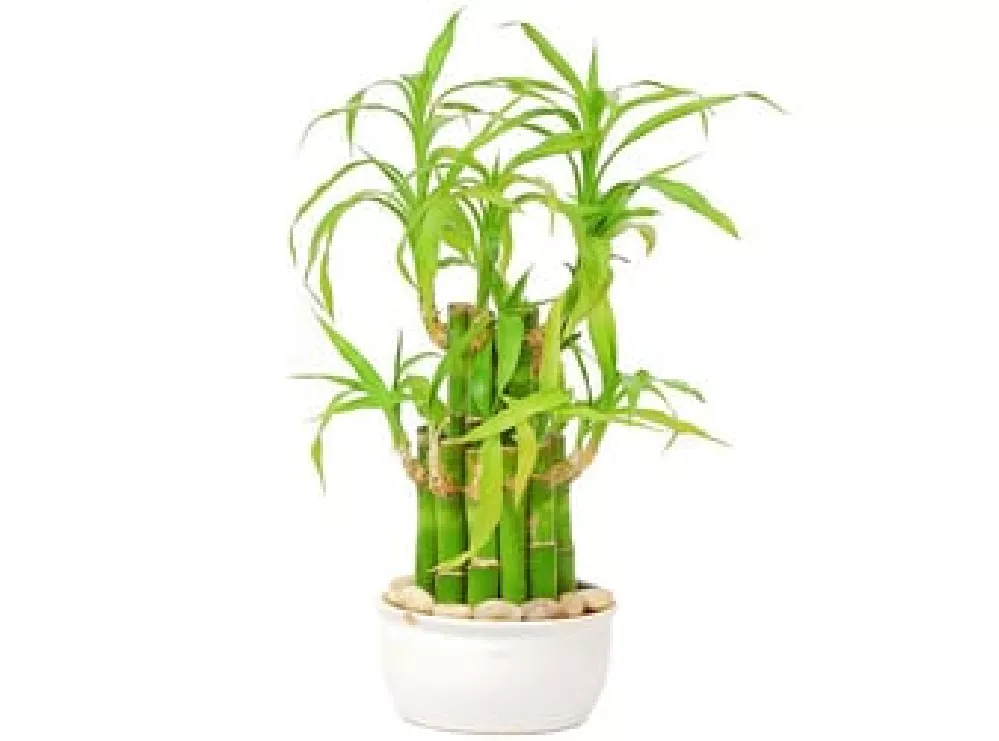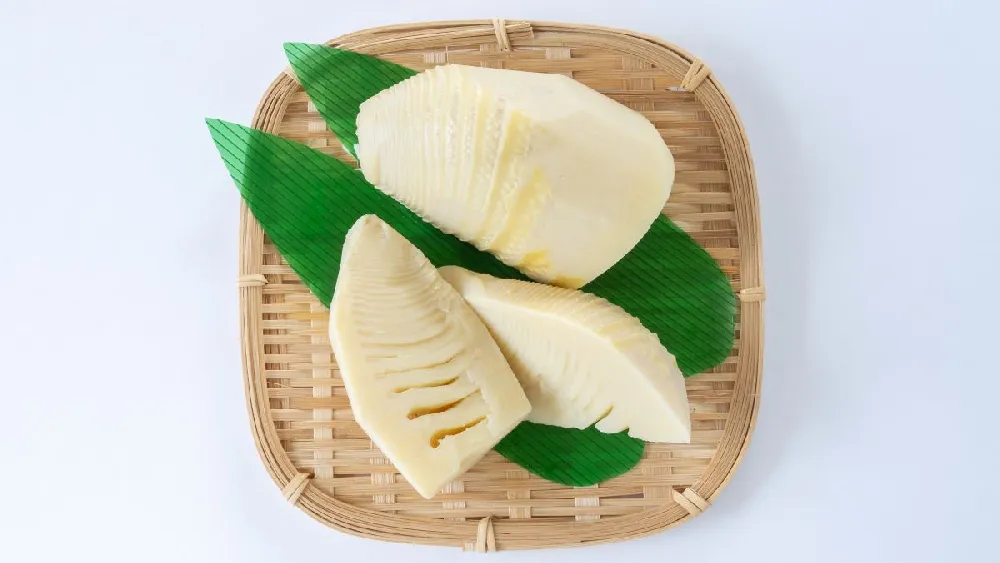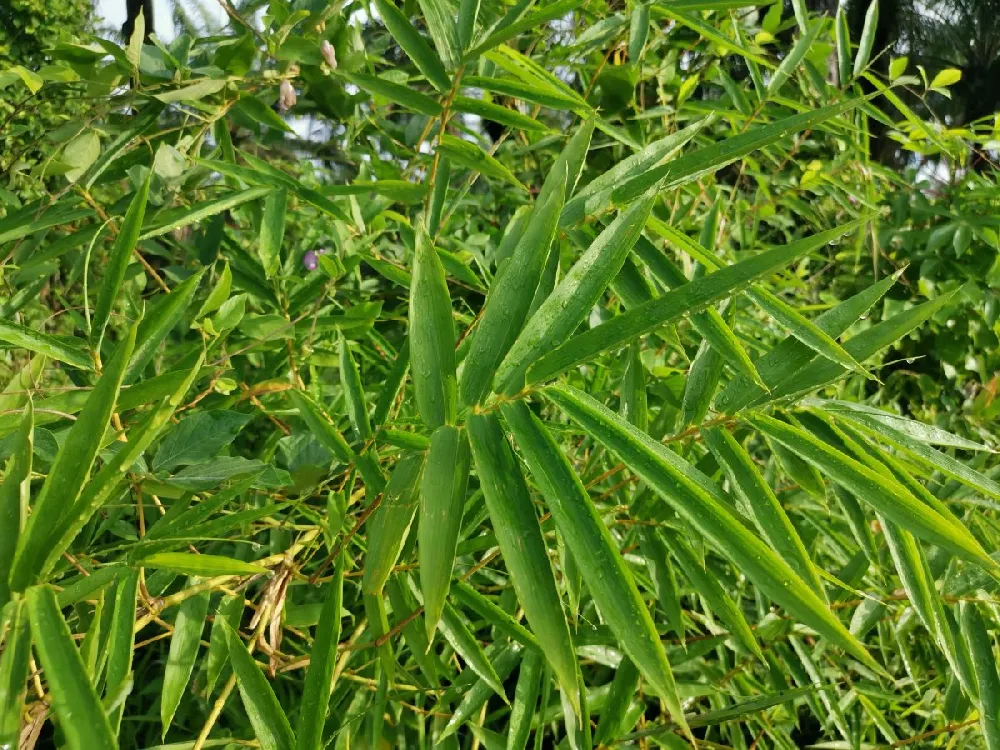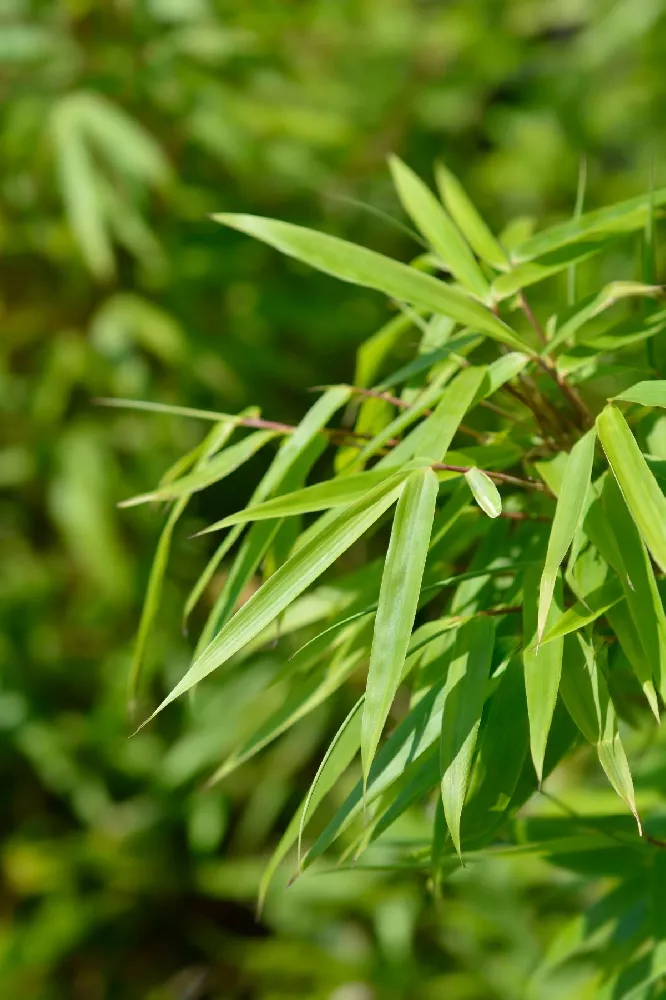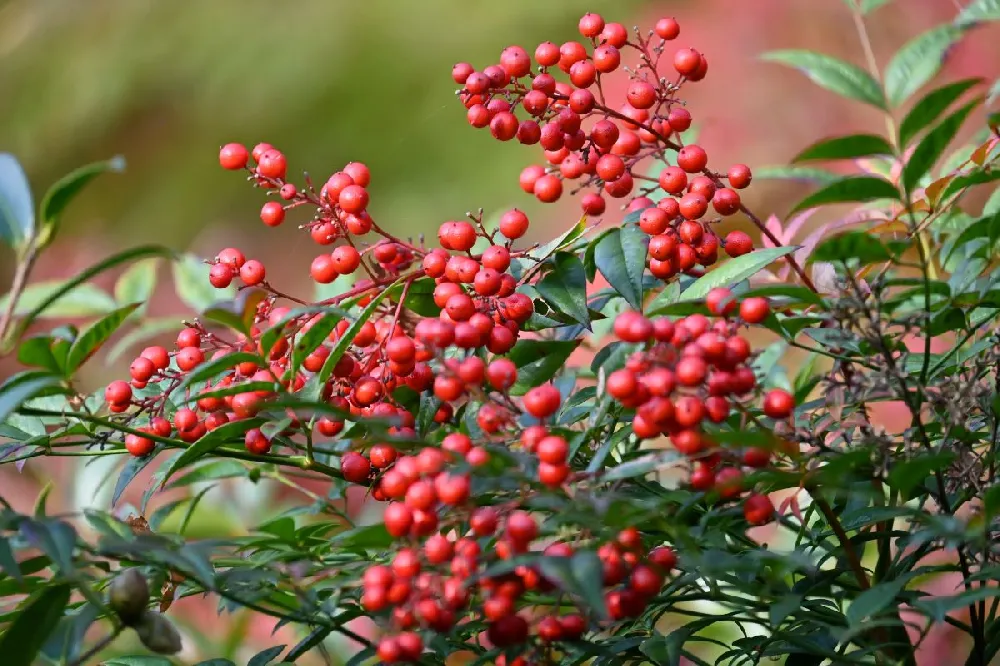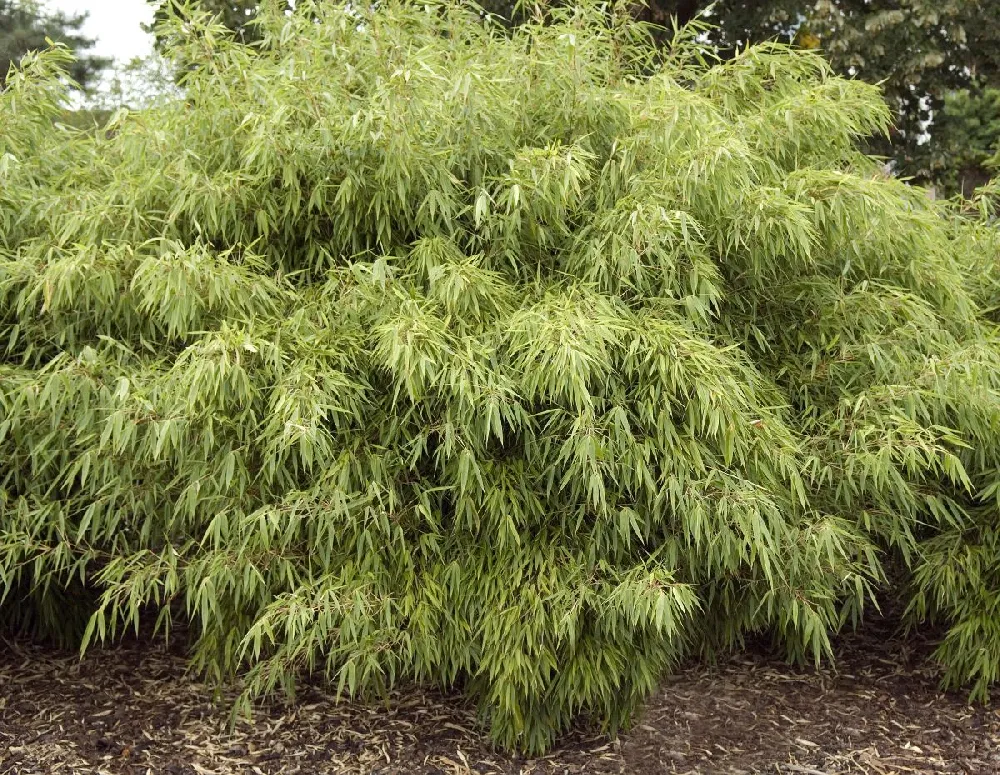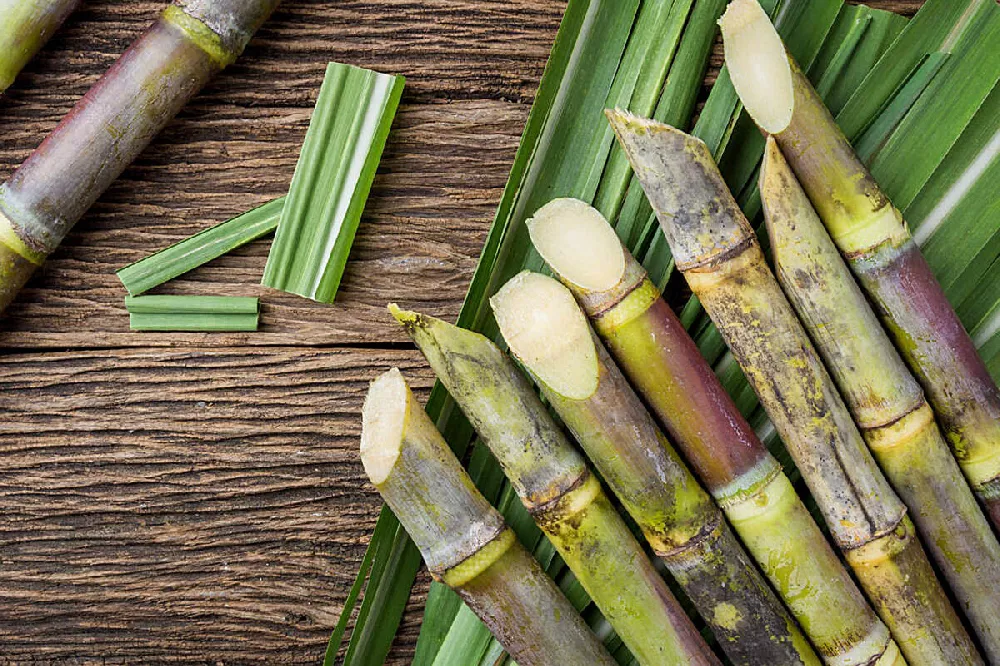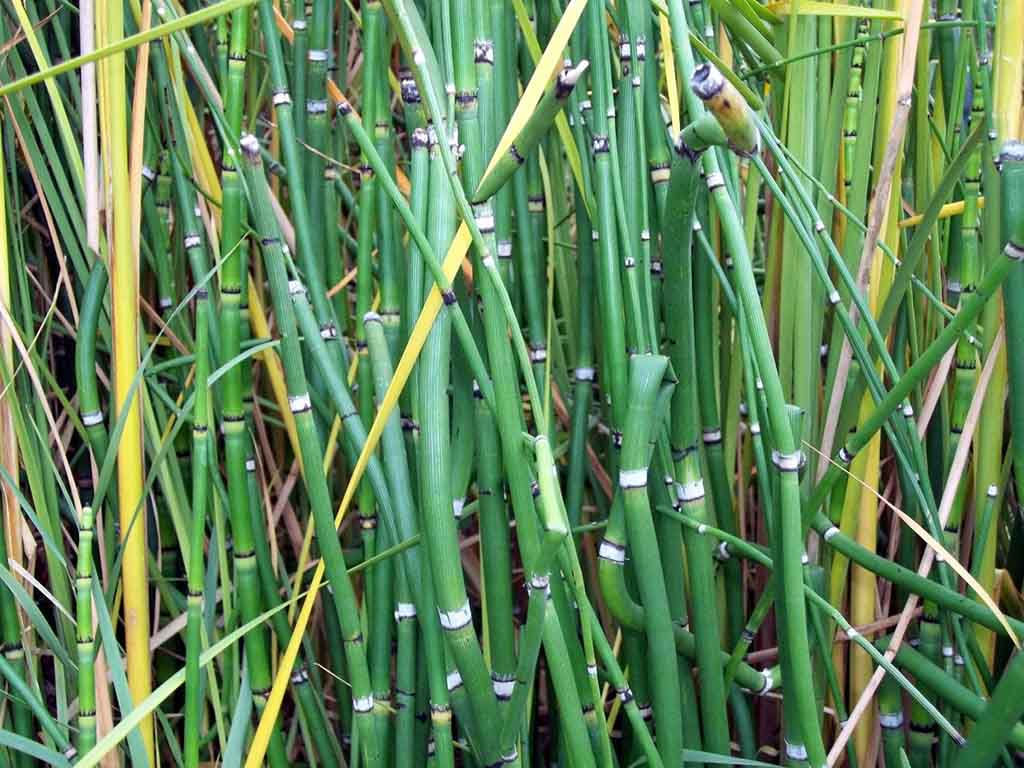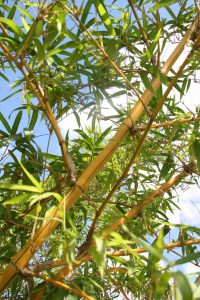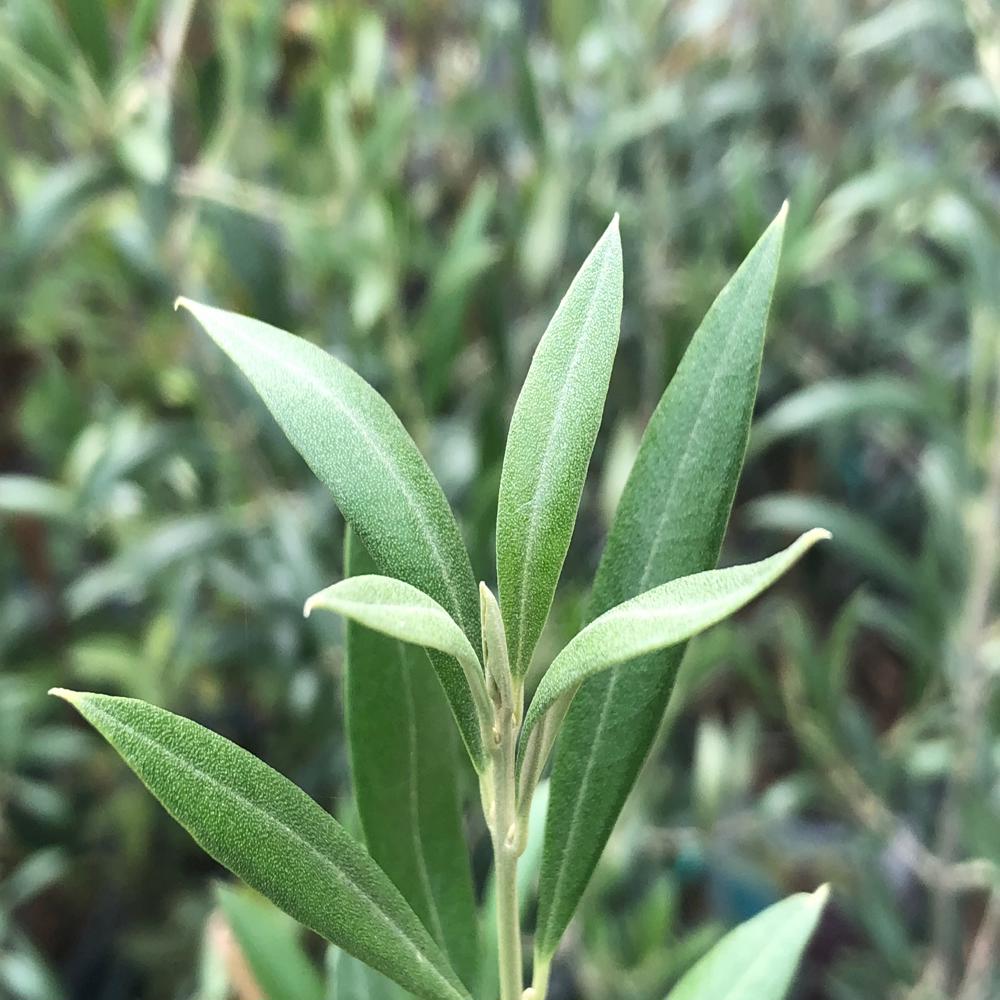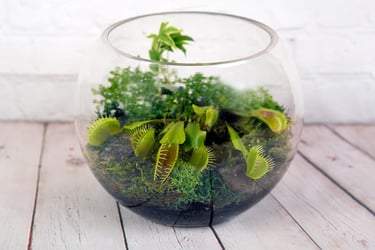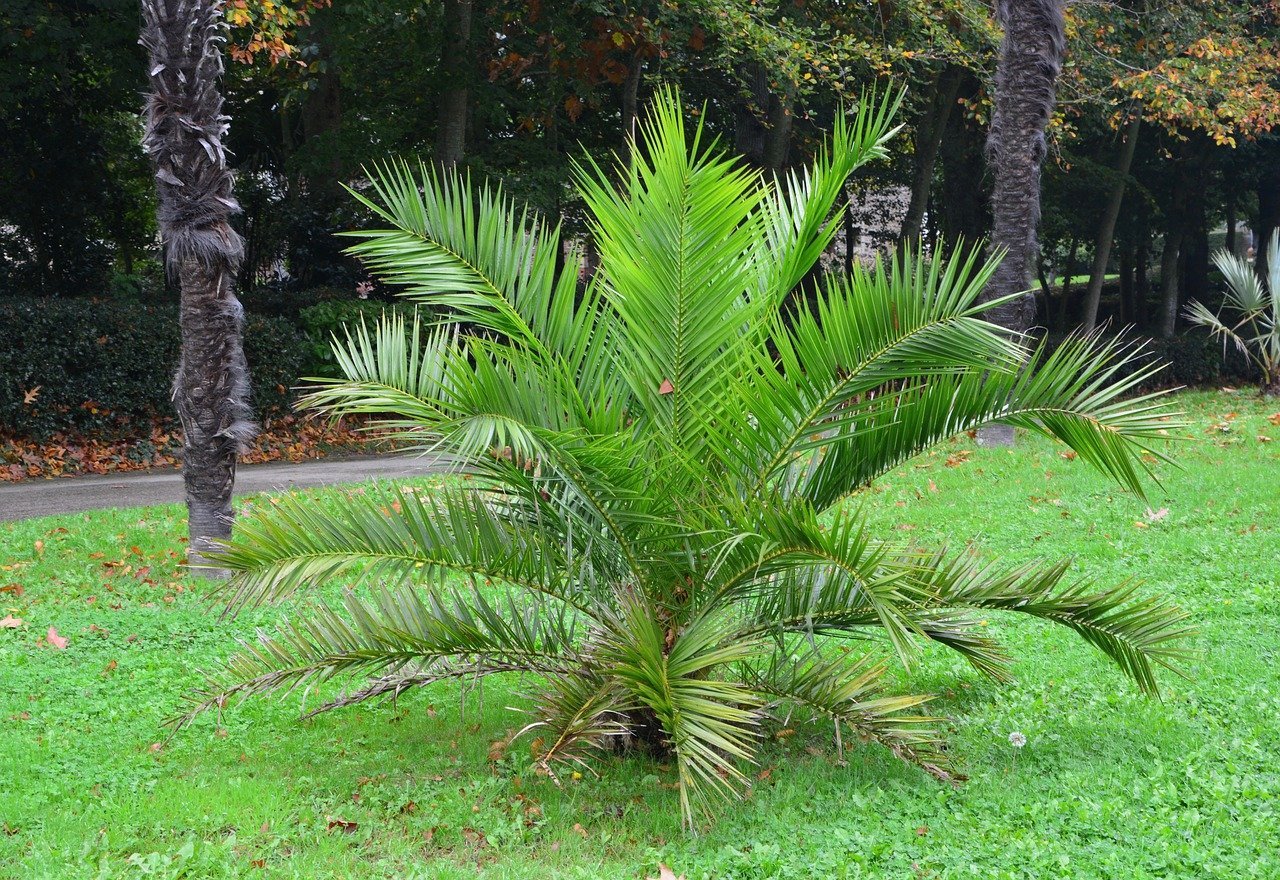- Home >
- Bamboo Trees
Bamboo Trees for Sale - Buying & Growing Guide
Filters
Price Range
Growing Zones
Plant Type
Sunlight
Mature Height
Plant Characteristics
12 Results
-
Growing Zone(s): 3-11 / 10-11$48.95
-
Growing Zone(s): 6-10$164.95
$169.95Save up to 2% -
Growing Zone(s): 8-10$129.95
$159.95Save up to 18% -
Growing Zone(s): 8-11$164.95
$229.95Save up to 28% -
-
-
Sold OutGrowing Zone(s): 4-11 patio / 8-11 outdoors$73.95
-
Sold OutGrowing Zone(s): 7-10$124.95
-
Sold OutGrowing Zone(s): 5-9$41.95
-
Sold OutGrowing Zone(s): 6-10$45.95
-
Sold OutGrowing Zone(s): 5-8$124.95
-
Sold OutGrowing Zone(s): 3-11 / 9-11$93.95
Bamboo Trees – Buying & Growing Guide
Bamboos, though they may look like trees, are actually a perennial type of plant belonging to the grass Bamboo has long been part of the Asian-inspired garden, but some shy away from it for fears that it will become invasive. And yet, it is a gorgeous, graceful plant that forms an excellent backdrop for other foliage species. In truth, choosing the proper variety and keeping an eye on its growth patterns is enough to keep it in bounds and contained.
How to Grow Bamboo
How to plant bamboo
Plant your bamboo where it will get full to partial sun, in good soil that is slightly acidic and not overly damp. Bamboo is a grass and should grow well anywhere that grass can grow. Space your plants anywhere from two to eight feet apart, depending on the variety you’re growing.
Dig a hole twice as wide as the root ball of your clump and just as deep. Tease out any of the bamboo’s roots that are encircling the root ball, as these can girdle the plant and eventually kill it. Place the bamboo in the hole so the top of the root ball is just under the ground level. Backfill (replace the dirt you removed from the hole) with soil, tamping it down to eliminate air pockets.
Water generously, allow the water to seep into the ground, and then give your plant another drink. Water your bamboo every few days for the first month after planting.
How to achieve maximum results
Choosing the right bamboo variety is important in order to achieve maximum results with your plants. Some bamboo, called running bamboo, is invasive, so consider where your bamboo will be placed and how you will keep it contained if you choose this type. Unless you’re growing your bamboo in a pot that can be brought inside in the winter, pay attention to the temperature range for the bamboo you select.
How to Care for Bamboo
Watering and nutrients
When newly planted, bamboo needs regular watering several times a week. But once you see robust growth starting on the plant, you can scale back on your watering. Once established, bamboo has shallow roots and needs an inch or so of water per week. If it’s not getting that amount of water from rain, water your plant regularly throughout the growing season.
Don’t feed your bamboo for the first month after planting while it acclimates to its new location. After the first month, feed your plant with a general purpose fertilizer formulated for bamboo or palm plants, or, if you prefer, add a layer of rich compost around the plant in the spring.
Pollination
Bamboo is a self-pollinator — you don’t need to have more than one plant to ensure good pollination. Most varieties of bamboo are pollinated through the action of the wind, although a few varieties rely on insects for pollination. You can also split clumps of bamboo to get new plants once an existing plant is established and has been growing well for a while.
Pruning
Pruning and thinning your bamboo should happen in late summer or early fall. You can trim off the top clump of your bamboo to control its height, or thin out the plant with sharp cuts above a branch node. Another way of controlling your bamboo is to dig up a clump that has become too large and unwieldy and break apart the root ball into sections. You can then transplant or discard these sections.
Pests and diseases
Insects that favor bamboo include bamboo mites, which are too small to be seen with the naked eye. You’ll know your plant is infected if you see small, light-colored spots or a fine webbing on the bottom of the leaves. Aphids may feed on bamboo, as do bamboo mealybugs. A general insecticide will help with any of these pests.
Bamboo is a sturdy plant that is resistant to many common plant illnesses. It may be impacted by fungal diseases, which you can control with a copper fungicide. Bamboo mosaic virus has no cure and will eventually kill the plant. Root rot and heart rot happens occasionally, and plants that are diagnosed with it should be dug up and destroyed.
12 Types of Bamboos
1. Buddha Belly Bamboo
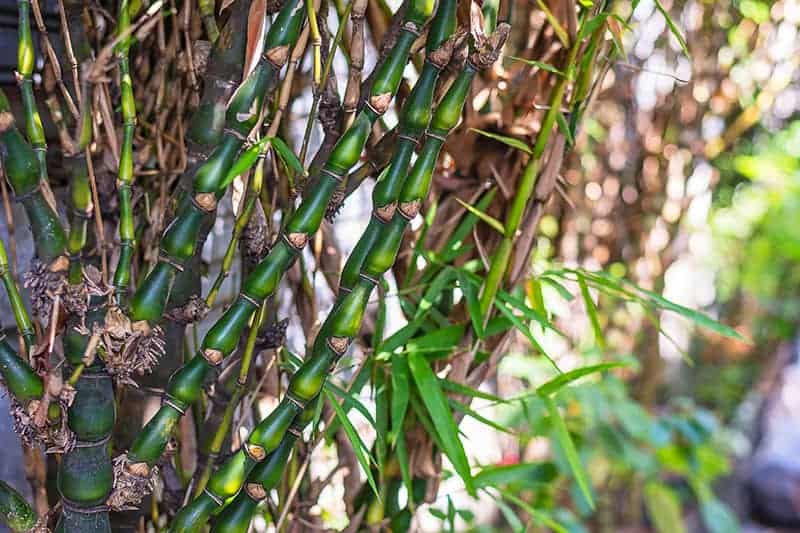
Scientific Name: Bambusa ventricosa
Mature Size: Up to 55 feet tall
USDA Hardiness Zone: 9-12
Light: Full sun to partial shade
Water: Maintain moist soil
Soil: Fertile, well-draining
Special Features: Decorative stems
This bamboo is native to China and gets its common name from its lumpy internodes, which resemble the bulging belly of Buddha. It is popularly used as an ornamental plant in containers and enjoys consistently moist and fertile soil. However, for the plant’s culm bulges to become exaggerated, it needs to be kept without fertilizer or in dry soil. It is a tropical plant that needs to be grown in temperate climates, though it can be kept indoors in cooler regions. It is a non-invasive type of bamboo and can be well utilized as a living privacy screen.
2. Giant Bamboo
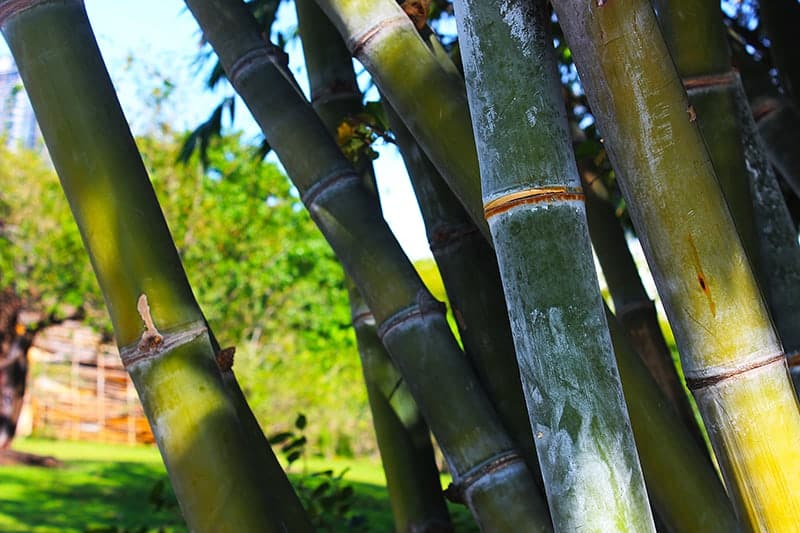
Scientific Name: Dendrocalamas giganteus
Mature Size: Up to 100 feet tall
USDA Hardiness Zone: 9-11
Light: Full sun to partial shade
Water: Maintain moist soil
Soil: Well-draining, rich
Special Features: Huge canes
At a height of up to 100 feet, the giant bamboo is the tallest type of bamboo in existence. It has chunky, sturdy culms that can measure up to one foot in circumference. These canes start out with a chalky white residue covering them, but as they age, they take on a faded dark blue through to pale green color. It grows incredibly quickly, producing shoots that are able to grow 12 inches in just one day. It is native to Thailand, Burma, and China, and flowers just once every four decades.
3. Umbrella Bamboo
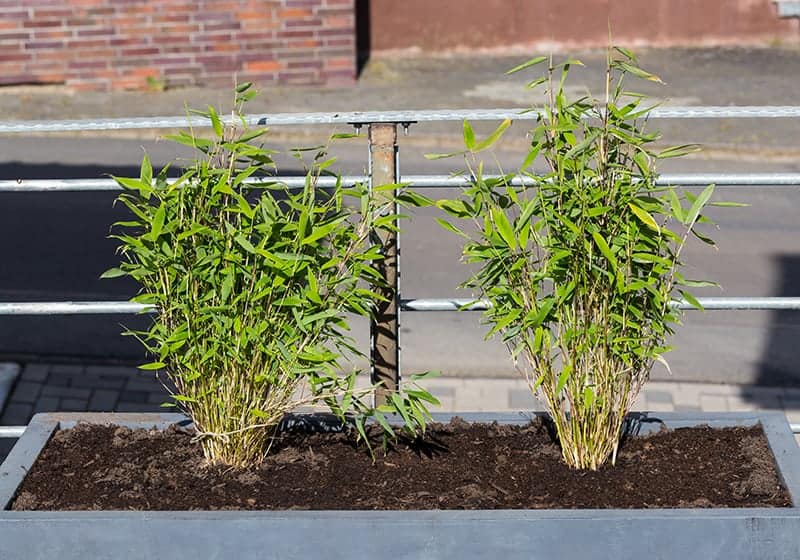
Scientific Name: Fargesia murielae
Mature Size: Up to 15 feet tall
USDA Hardiness Zone: 5-9
Light: Partial shade
Water: Maintain moist soil
Soil: Moisture retentive
Special Features: Winner of the Award of Garden Merit from the Royal Horticultural Society
This versatile bamboo is popularly cultivated for a range of reasons; it is non-invasive, elegant, sturdy, easy-care, hardy, and adaptable. It features green-yellow canes from which slender, narrow leaves are produced. The foliage has a dainty look, and is bright green on top, while gray-green on the underside. The canes, as they grow, gently arc from the weight of their foliage, but do not snap or need staking. This bamboo grows quickly and has a clump-forming habit, typically spreading to around four or five feet in width. It likes to be grown in partial shade, as direct sun can cause the leaves to shrivel up.
4. Dragon Head Bamboo
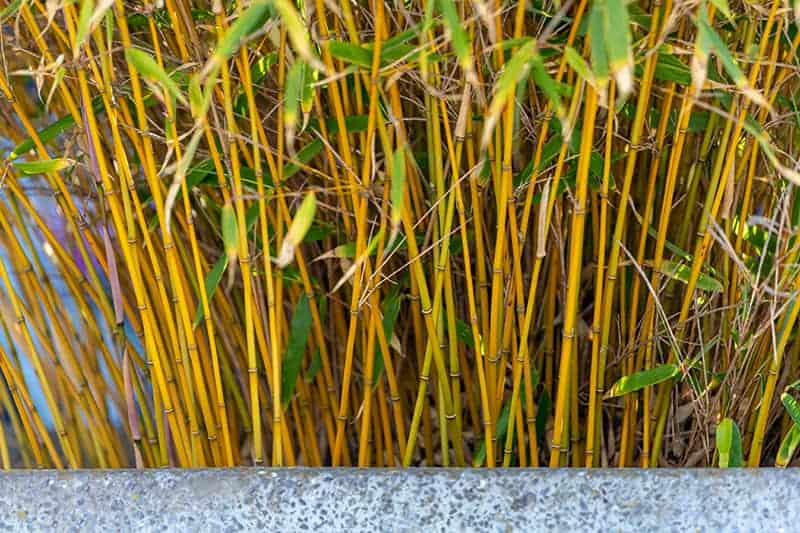
Scientific Name: Fargesia rufa
Mature Size: Up to 8 feet tall
USDA Hardiness Zone: 5-8
Light: Full sun to partial shade
Water: Maintain moist soil
Soil: Well-draining, fertile
Special Features: Attractive foliage
This is the type of bamboo which is loved as a primary food source for the Giant Panda. If you don’t have a panda to feed, grow this plant for its graceful aesthetic. It features shiny green canes that arch slightly as they age under the weight of their foliage. Foliage is blue-green, narrow, and glossy, with each leaf measuring around four inches in length. Native to China, this plant can be propagated easily from stem cuttings or division.
It grows in a wide range of soils so long as they retain moisture well and will thrive in a combination of sun and shade. Ideally, the shade would be offered during the afternoon when the sun is at its most intense. This plant has been the recipient of the Award of Garden Merit from the Royal Horticultural Society and can be grown in containers, borders, or to create privacy screening.
5. Chinese Fountain Bamboo
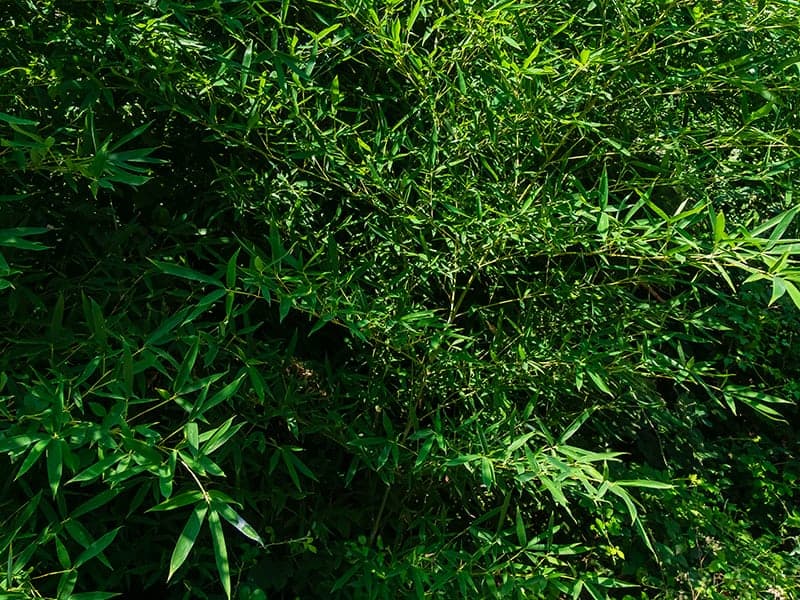
Scientific Name: Fargesia nitida
Mature Size: Up to 15 feet tall
USDA Hardiness Zone: 5-9
Light: Partial shade
Water: Maintain moist soil
Soil: Moisture retentive
Special Features: Suitable for most soil types
This elegant plant features long and slender canes that arch heavily under the weight of their foliage. Canes are medium green with patches of flushed purple, forming clumps of up to five feet across. The foliage of this bamboo is long and narrow, with a matte surface in a dark shade of gray-green. This tough and reliable plant can tolerate severe cold and does not like excessive heat. It fares best in a partially shaded position and requires less sunlight to thrive than most other bamboo plants. It will grow in a wide range of soil types, including poorly draining and soggy soil, making it suitable for planting along riverbanks, near ponds, and streams.
6. Fish Pole Bamboo
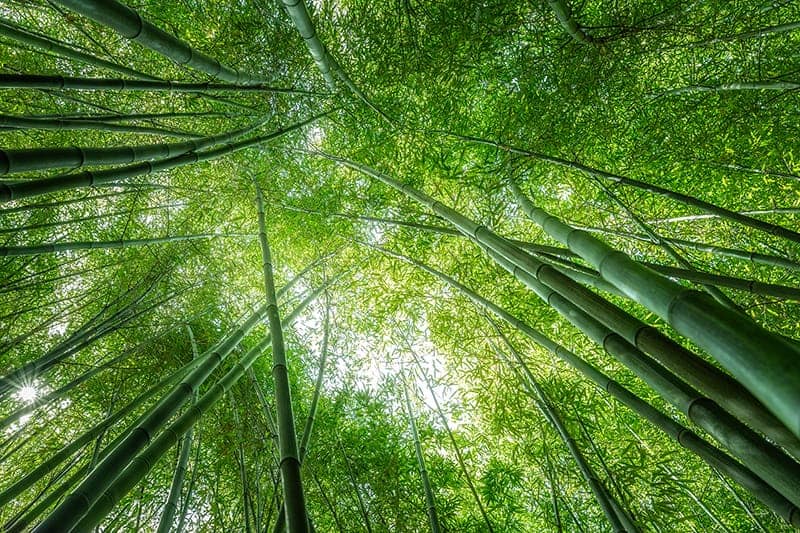
Scientific Name: Phyllostachys aurea
Mature Size: Up to 25 feet tall
USDA Hardiness Zone: 7-11
Light: Full sun to partial shade
Water: Maintain moist soil
Soil: Well-draining
Special Features: Tolerant of heat and drought
The smooth and straight canes of this plant have earned it the common name of ‘fish pole bamboo.’ The canes are evergreen, starting out bright medium green, but dulling to a pale yellow-green with maturity. The canes are sturdy, tough, and relentlessly remain upright without arching. The plant has a vigorous growth habit, growing up to 25 feet tall and 15 feet wide. It is cold hardy, tolerant of heat and drought, though it prefers to grow in moist soil. When kept in dry conditions, the plant will form clumps; however, in moist soil and warm temperatures, it can become invasive.
The fish pole bamboo plant has received the Award of Garden Merit from the Royal Horticultural Society. It is native to China, where its silky canes have been used to make walking sticks and handles for umbrellas.
7. Japanese Timber Bamboo
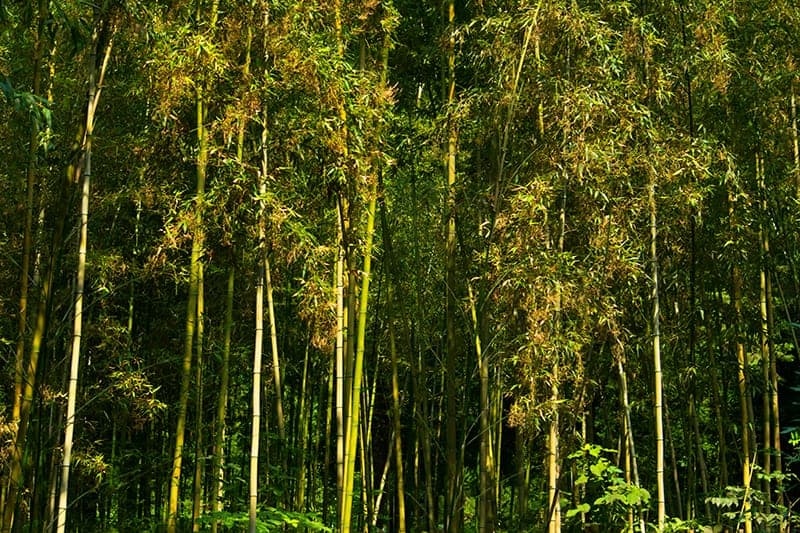
Scientific Name: Phyllostachys bambusoides
Mature Size: Up to 70 feet tall
USDA Hardiness Zone: 7-10
Light: Full sun to partial shade
Water: Maintain moist soil
Soil: Well-draining, fertile
Special Features: Cultivated for use as timber
Despite being native to China, this plant is commonly known as Japanese timber bamboo, because it is widely cultivated in Japan, and harvested for use as timber. The canes of this bamboo are glossy and smooth. They emerge in a stunning shade of rich emerald green, fading to yellow-green as they age. T
he canes gently arch under the weight of the weeping foliage, which is bright green on the surface, and dull green underneath. Each leaf can measure up to seven inches long and takes a broader shape than most bamboo plants. Due to its clumping habit and its thick canes, which can measure up to six inches across, this plant makes a good privacy screen or living fence. It prefers rich, moist, well-draining soil, though it can become invasive in ideal conditions such as these.
8. Hedge Bamboo
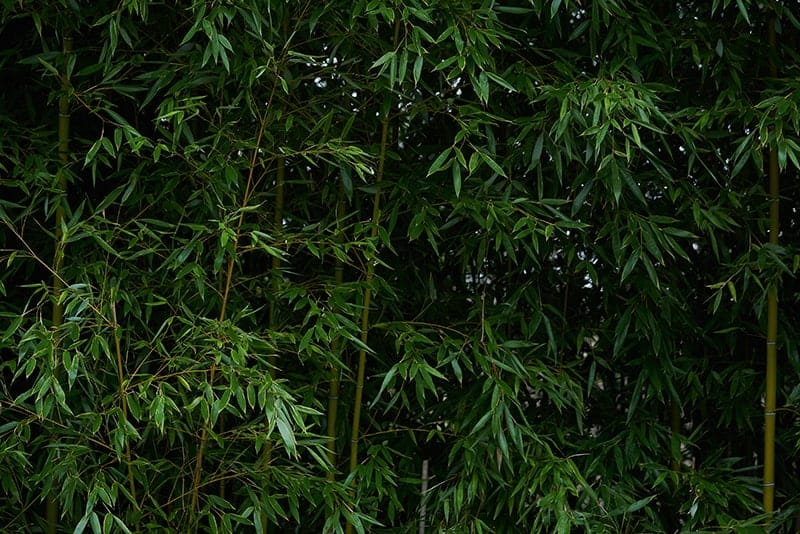
Scientific Name: Phyllostachys glauca
Mature Size: Up to 25 feet tall
USDA Hardiness Zone: 7-10
Light: Full sun
Water: Maintain moist soil
Soil: Well-draining
Special Features: Drought tolerant
This vigorous evergreen bamboo is notable for its glowing turquoise canes, which are a result of bright green culms shrouded in blue-gray powder. This stunning effect is only present in younger plants, as the powder is lost with age, and the canes fade to a yellow-green. Each cane measures around two inches in width, with an upright growth habit. It prefers warm climates where it grows quickly, though, in cooler weather, the growth will halt. This is not an invasive species but will spread gradually to form a small bamboo orchard, up to 20 feet wide.
9. Black Bamboo
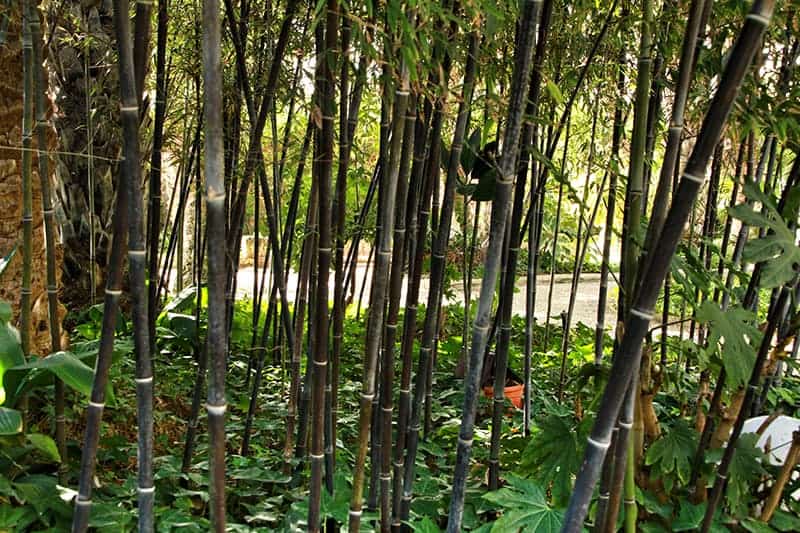
Scientific Name: Phyllostachys nigra
Mature Size: Up to 25 feet tall
USDA Hardiness Zone: 7-11
Light: Full sun to partial shade
Water: Maintain moist soil
Soil: Rich, well-draining
Special Features: Striking canes
This unusual bamboo produces slender upright canes, which are olive green when young They quickly start to develop into a marbled brown color before becoming entirely black in around two to three years. All of the canes of the plant will go through color development at slightly different types, giving a multi-colored effect when viewed as a whole. The canes of this bamboo measure approximately two inches across, and have a smooth and glossy surface. Once black, the canes are a stark contrast to the foliage of the plant, which is a bright glossy green.
This stunning plant is valued as an ornamental plant and has won the Award of Garden Merit from the Royal Horticultural Society. Black bamboo has a vigorous growth habit and could potentially become invasive in hot, humid, and moist conditions. It will work well as a privacy hedge, as an ornamental plant, and in container gardens (Royal Horticultural Society).
10. Green-Glaucous Bamboo
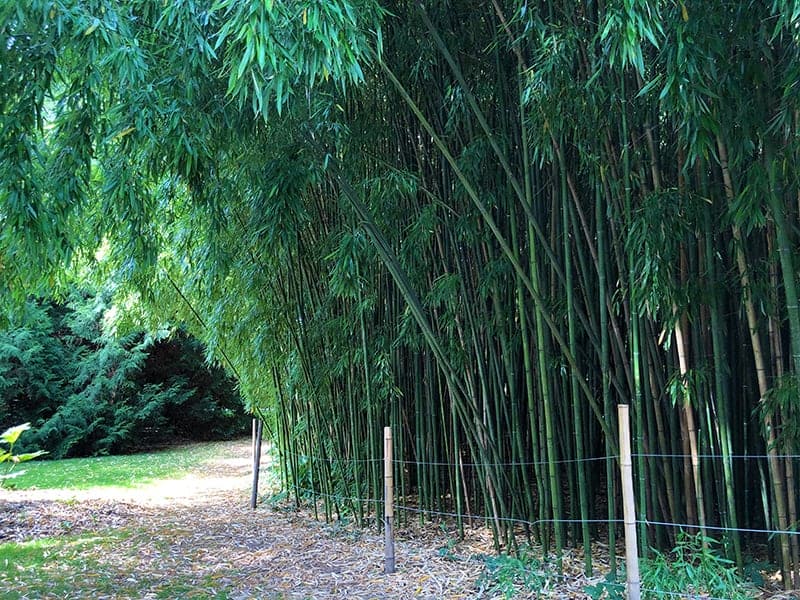
Scientific Name: Phyllostachys viridiglaucescens
Mature Size: Up to 30 feet tall
USDA Hardiness Zone: 6-11
Light: Full sun to partial shade
Water: Maintain moist soil
Soil: Well-draining, fertile
Special Features: Striped culms
This bamboo grows easily and spreads in a dense habit to form a grove. Due to this quality, it works exceptionally well as a privacy screen or an informal living fence. The canes of this plant emerge in a deep shade of emerald green, developing to lime green with age and eventually maturing to a golden yellow-green. The canes are striped with white at the nodes, giving them a unique patterned effect.
The foliage of this plant is medium green, long and broad. Each leaf typically measures around seven inches in length. It prefers well-draining and moist soil, though it can sometimes become invasive in ideal conditions.
11. Moso Bamboo
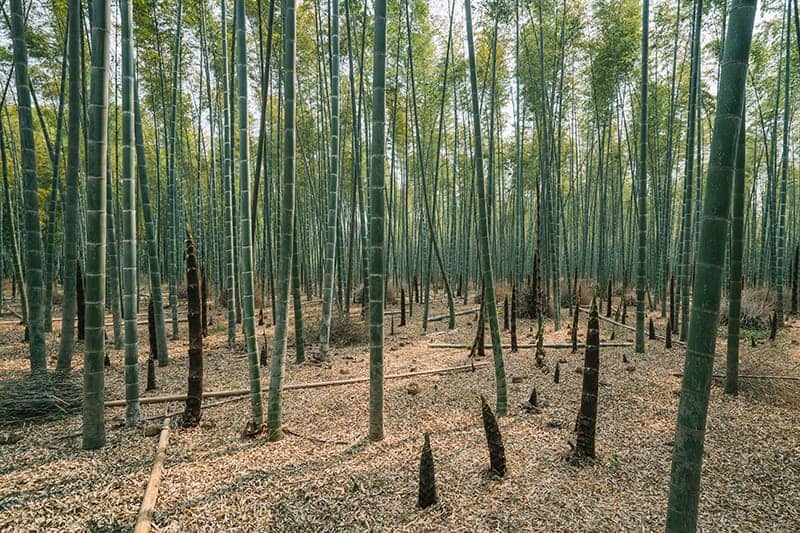
Scientific Name: Phyllostachys edulis
Mature Size: Up to 60 feet tall
USDA Hardiness Zone: 7-10
Light: Full sun to partial shade
Water: Maintain moist soil
Soil: Fertile, well-draining
Special Features: Majestic silhouette
This statuesque plant is noted for its striking elegance and majestic appeal. It grows to around 60 feet in height, making it the world’s tallest type of hardy bamboo. The culms are very thick and robust, with a width of up to eight inches. These canes, unusually, are blanketed in a fine covering of soft, velvety hair. The canes start out dark green, then becoming yellow-green, and finally settling on orange-yellow. The foliage of the plant is a stark contrast to the great size of its culms, as the leaves are notably small, measuring up to three inches long.
Moso bamboo enjoys warm and moist conditions, where it can grow aggressively to the point of becoming a problem species. However, in cooler climates, its growth spread will be stunted. This plant is native to East Asia, and it is cultivated throughout Japan and China for the production of paper.
12. Painted Bamboo
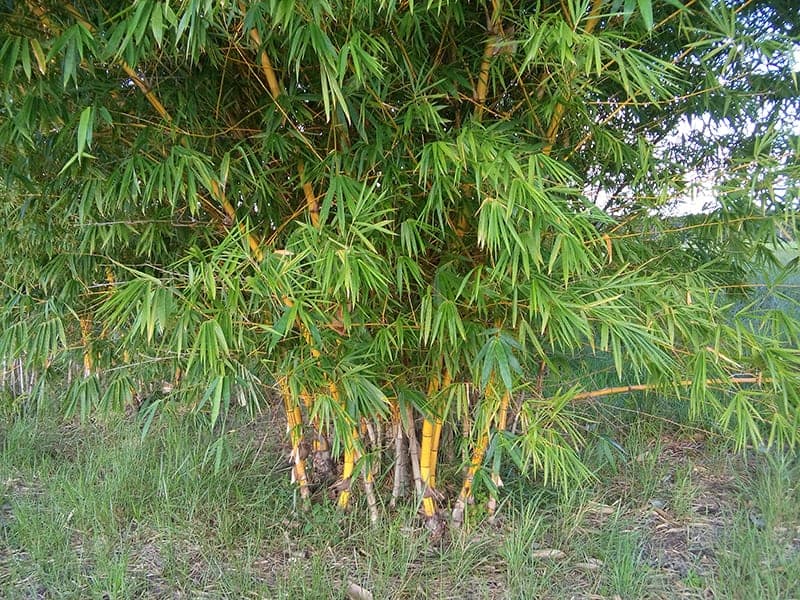
Scientific Name: Bambusa vulgaris ‘Vittata’
Mature Size: Up to 60 feet tall
USDA Hardiness Zone: 9-12
Light: Full sun to partial shade
Water: Maintain moist soil
Soil: Fertile, well-draining
Special Features: Patterned canes
This is popular ornamental bamboo, which is prized for the vertical stripes on its culms. It has pale golden canes which have various sized deep green striped markings in random patterns between each node. Painted bamboo typically grows between 40 and 60 feet tall, gently arching with age under the weight of the foliage. Long and narrow leaves measure up to seven inches long. This is a non-invasive species that has a strong and complex root system, which makes it useful for erosion control.
